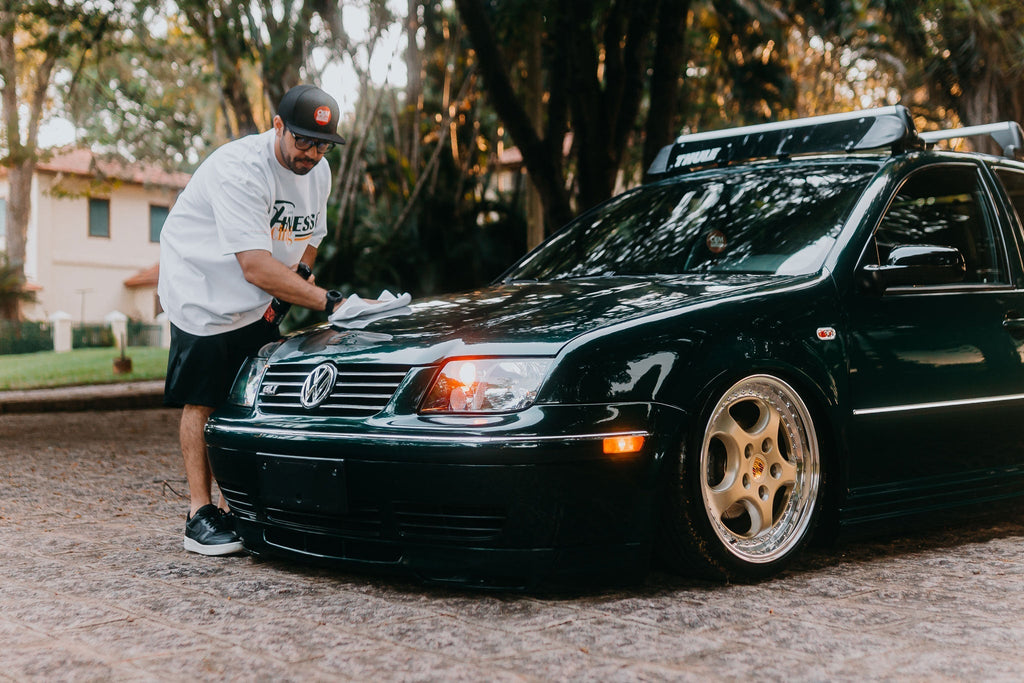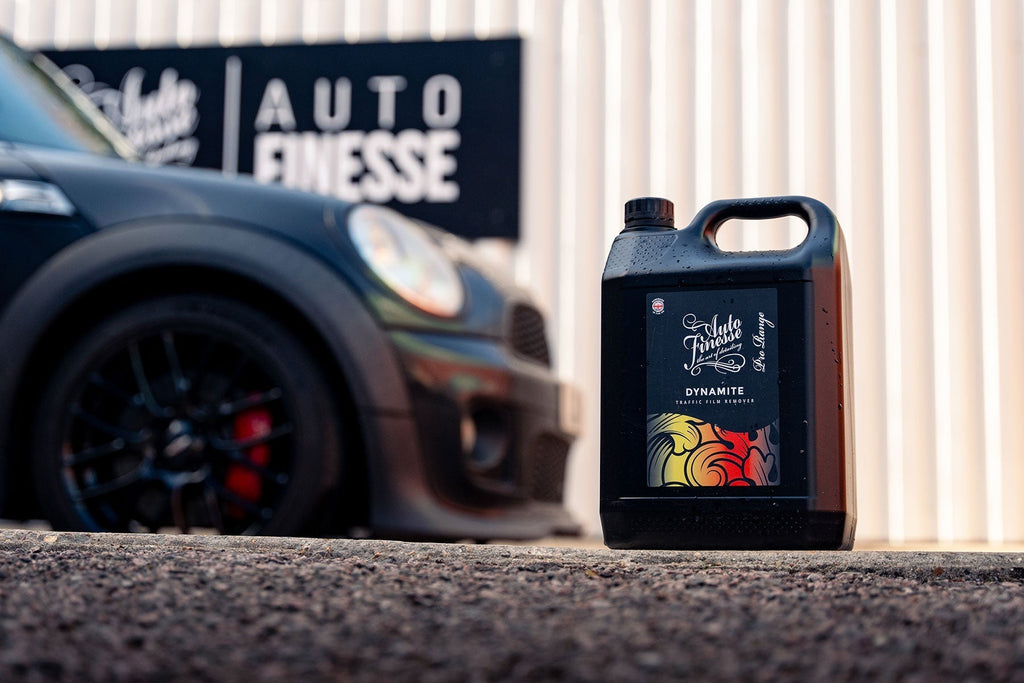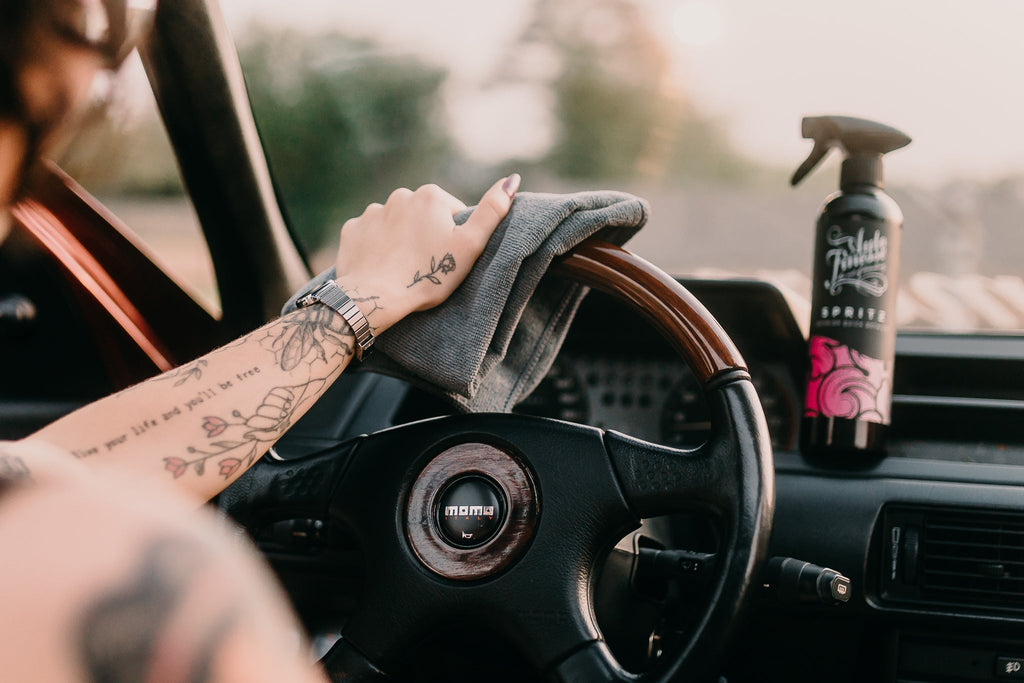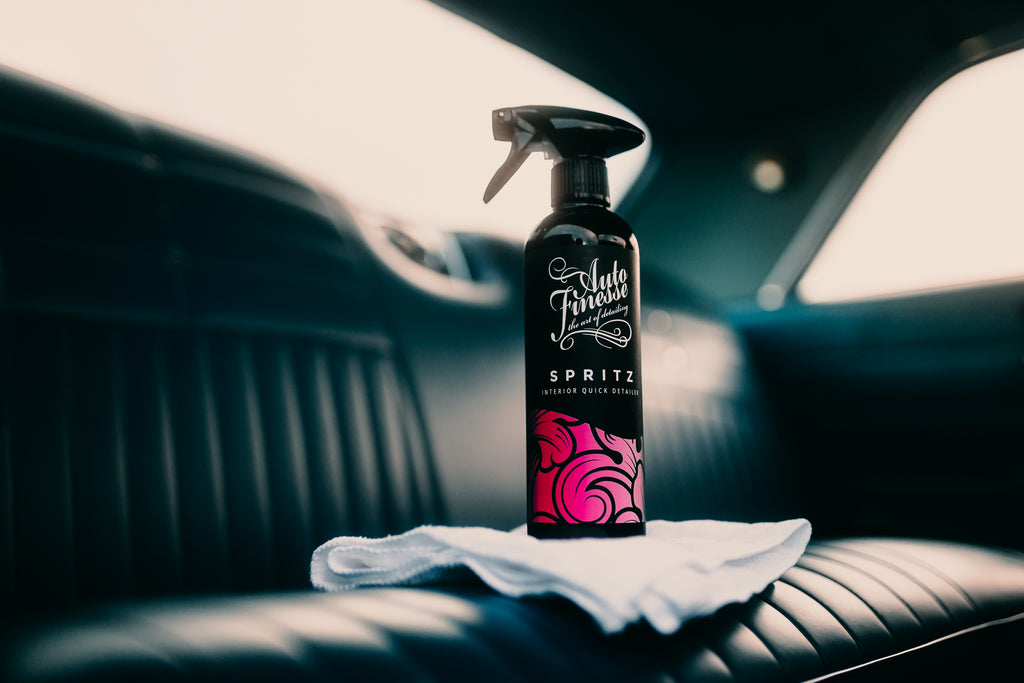Aqua Coat: Essential Do's and Don'ts
Aqua Coat Hydrophobic Rinse Aid is undoubtedly one of our most popular and user-friendly detailing products. We often receive questions about the best time and method for application. After extensive research and development, we’ve perfected Aqua Coat for optimal results. Here are some simple do's and don'ts to help you achieve the best possible hydrophobic performance and that signature bubblegum scent.

Aqua Coat is not designed for full detailing. It’s intended to provide a quick and easy SiO2-based layer that boosts protection and enhances water beading. There’s no need for polishing and waxing before applying the hydrophobic solution, as it will still form a durable, long-lasting barrier against the elements. However, if your paintwork requires decontamination and correction, complete those steps first and reserve Aqua Coat for your regular maintenance washes.

Be sure to thoroughly wash and dry your car before applying Aqua Coat. Always begin with a clean, wet vehicle, applying Aqua Coat right after rinsing off your contact wash. Since Aqua Coat doesn’t require curing time, it’s crucial to rinse it off immediately after application—it’s a hydrophobic rinse aid, after all. After your final rinse, dry the vehicle completely with a soft drying towel or microfibre cloth, even if you live in a soft water area. This helps prevent the product from drying too quickly and leaving streaks or spots.








Developed to enhance water beading, protection and gloss quickly and efficiently during the wash stage, this advanced Si... See product details More
Aqua Coat is designed for use on the entire vehicle, including wheels, trim, and glass. It can also be applied to more specific areas, such as the engine bay and underside of the bonnet. The key to success is applying and rinsing quickly, using the product sparingly. Don’t overspend by using too much—less is more with Aqua Coat. A light mist across most of the vehicle will be enough, as the solution will spread as you rinse from top to bottom. You’ll actually see it working in real time.

Rinse aids like Aqua Coat are not meant to dry naturally. Using it in direct sunlight, hot weather, or on a car that's still warm from driving can cause it to dry too quickly. Ideally, you should avoid washing your car in these conditions. While Aqua Coat won't damage your vehicle if left to dry, any residue can easily be buffed out with Tripple car polish. However, to prevent streaking and spotting, simply make sure the product doesn't dry on its own.








The ultimate luxury microfibre car drying towel, our Aqua Deluxe is constructed from ultra-dense 1200GSM pile microfibr... See product details More
Hard waxes create a smooth, slick surface by filling the pores in the paint, a process known as leveling the optical finish. On the other hand, Aqua Coat bonds to the paint at a molecular level, expanding to form a protective layer that lasts up to 3 months. When applied immediately after waxing, the wax can interfere with the bonding process, causing Aqua Coat to push the wax out of the pores as it expands. To ensure optimal results, it's best to wait at least three to four washes after waxing before applying Aqua Coat.

Aqua Coat is one of the few detailing products where you can visibly see it working during application. The difference in water behavior is clear between the first rinse (after your contact wash) and the second rinse (after applying Aqua Coat). The transformation is even more noticeable once the vehicle is dry.













